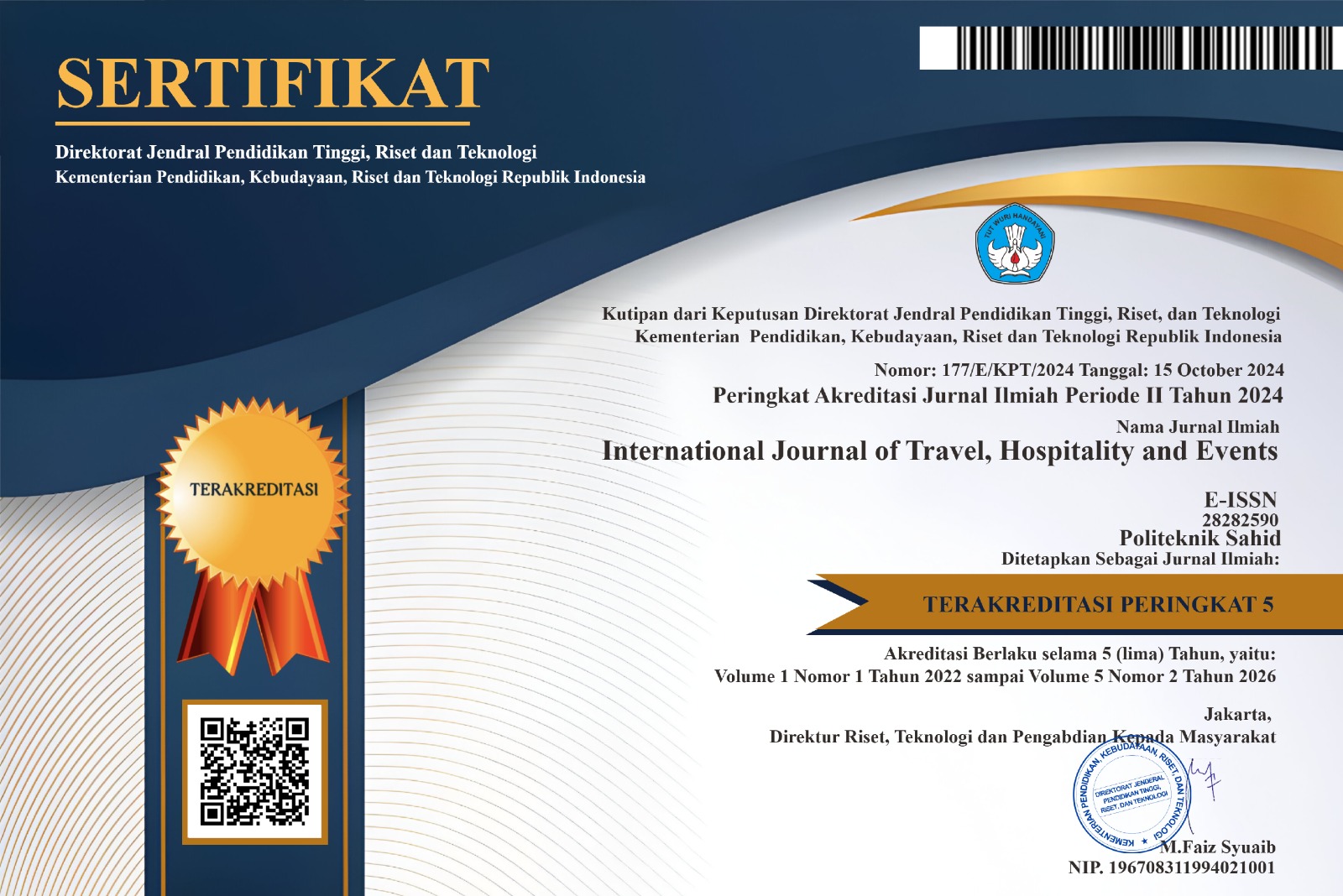Strengthening Brand Image and Loyalty for The Domestic Market at The Apurva Kempinski Bali
DOI:
https://doi.org/10.56743/ijothe.v3i3.424Keywords:
hotel, brand image, brand engagement, brand loyalty, domestic marketAbstract
Purpose: This research aims to engage the brand image and brand loyalty of The Apurva Kempinski Bali in the domestic market in the context of the COVID-19 pandemic. It concerns strategies adopted by the hotel to sustain its operations amidst changing market conditions.
Research methods: Qualitative methods such as interviews and observations were used to understand the challenges faced by the tourism industry in Bali and to identify effective strategies employed by businesses like The Apurva Kempinski Bali. Quantitative methods, such as data analysis of reviews and social media engagement metrics, were used to assess the hotel's performance and customer satisfaction.
Result and discussion: The COVID-19 pandemic significantly affected Bali's tourism industry, leading to a reliance on domestic tourists to sustain the local economy. The Apurva Kempinski Bali became popular among domestic tourists, emphasizing local expertise and showcasing Indonesia's cultural richness.
Implications: The hotel received overwhelmingly positive reviews, indicating high satisfaction among guests, mainly domestic tourists. Active engagement on social media platforms and prompt responses to customer queries were identified as effective strategies for enhancing customer engagement and loyalty.
Downloads
Published
How to Cite
Issue
Section
Categories
License
Copyright (c) 2024 I Kadek Budiasa, Ni Gst Nym Suci Murni, I Gede Mudana, Made Sudiarta, I Nyoman Cahyadi Wijaya

This work is licensed under a Creative Commons Attribution 4.0 International License.


























